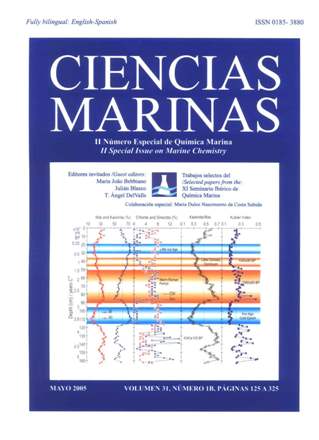Relationship between PCBs in suspended and settled sediments from a coastal lagoon
Main Article Content
Abstract
Polychlorinated biphenyl (PCB) congener concentrations and organic matter content were determined in 84 samples of suspended and settled sediments collected from six different locations in the Ria Formosa lagoon (Portugal). Total PCB (tPCB) concentrations were higher in the suspended matter (1.00–39.80 ng g–1 dw) than in the sediments (0.10–2.10 ng g–1 dw) and, in general, the same was true for the organic matter. Partial least squares (PLS) analysis using the suspended sediments as signatures indicated that they better explained the settled sediment pattern compared to the reverse. This suggests a suspended sediment source outside the lagoon as source of these PCBs. PLS analysis also indicated that Aroclor 1242 best explained the congener pattern in the sediments, but lower fits were obtained for the suspended matter. The tri- and tetra-chlorinated biphenyls were the most abundant congeners (about 60% of tPCB), followed by the hexa- (20%), penta- (11%) and hepta + octa-chlorobiphenyls (9%). The principal congener differences between the suspended and settled sediments were for the smaller tri- and tetrachlorinated biphenyls, which were preferentially accumulated in the settled sediments. In contrast, congener 49 was significantly more abundant in the suspended phase and may be formed through the anaerobic UV degradation pathway either in suspension or on the surface of strongly anoxic sediments at low tide.
Downloads
Article Details

This work is licensed under a Creative Commons Attribution 4.0 International License.
This is an open access article distributed under a Creative Commons Attribution 4.0 License, which allows you to share and adapt the work, as long as you give appropriate credit to the original author(s) and the source, provide a link to the Creative Commons license, and indicate if changes were made. Figures, tables and other elements in the article are included in the article’s CC BY 4.0 license, unless otherwise indicated. The journal title is protected by copyrights and not subject to this license. Full license deed can be viewed here.

